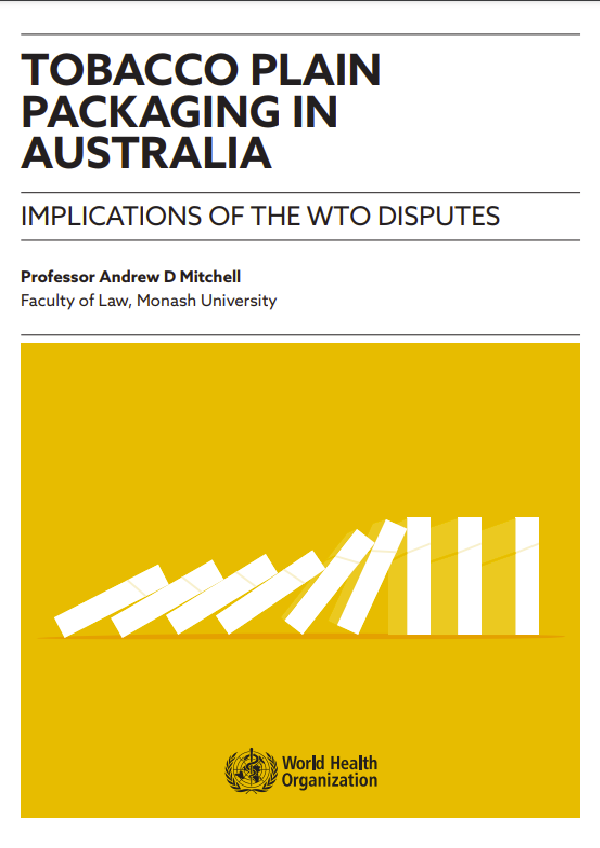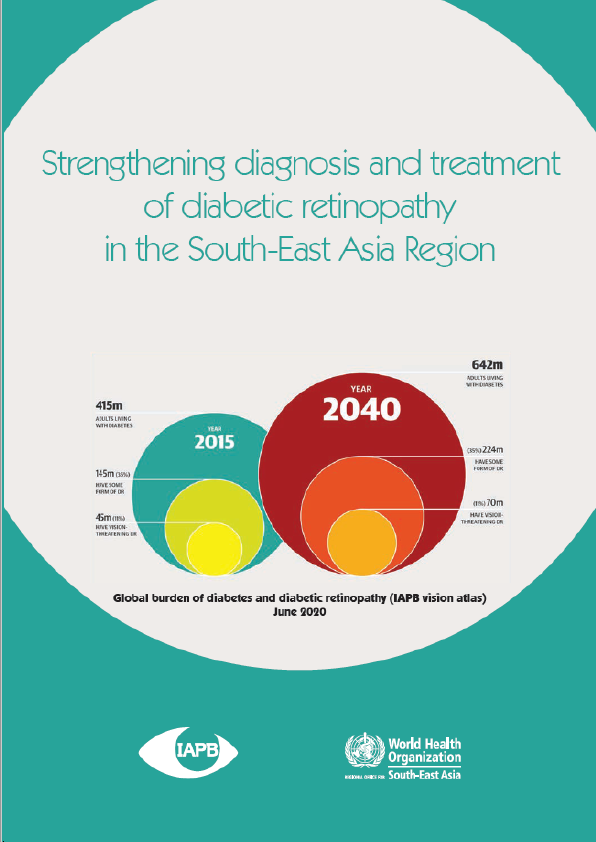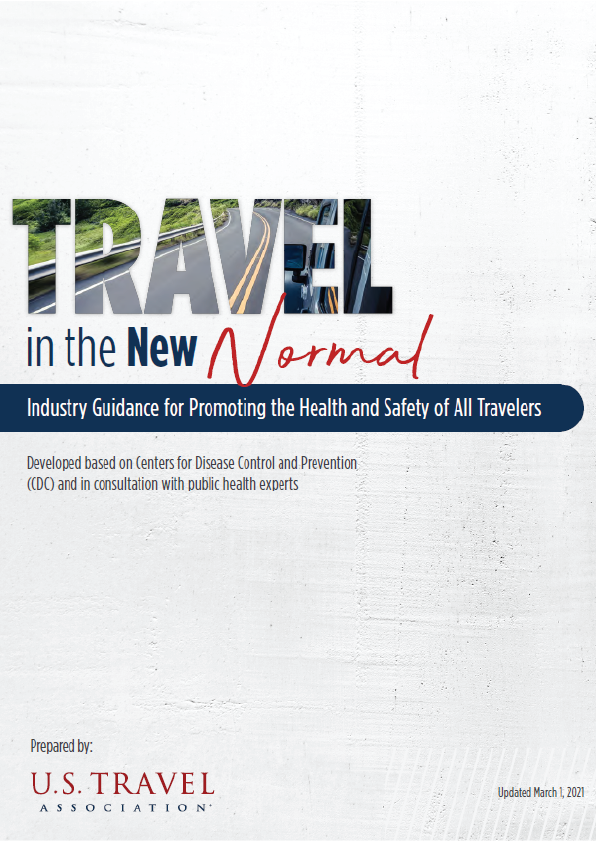Tobacco Plain Packaging in Australia
In 2011, the Australian Government introduced plain packaging as part of a comprehensive suite of new and existing tobacco-control measures. The plain packaging measures fully standardized the appearance of tobacco products and their retail packaging. It prohibited the use of certain trademarks and other marks to be used on tobacco products and their packaging (e.g. stylized word marks, composite marks, and figurative marks) and permitted the brand, company, or business name and the variant name of the tobacco product to be printed only in a typeface, color, style and font size prescribed by the regulations. These measures were challenged before the World Trade Organization (WTO) on the ground that they were inconsistent with the Agreement on Technical Barriers to Trade (TBT Agreement) and the Agreement on Trade-Related Aspects of Intellectual Property Rights (TRIPS Agreement). The Panel dismissed all the claims brought by the complainants and the Appellate Body upheld its findings.
The Appellate Body’s affirmation of the legality of Australia’s plain packaging measures means that countries are likely to follow suit in implementing similar measures and that they may do so with confidence about the legal status of those measures under WTO law. s findings. The Appellate Body’s affirmation of the legality of Australia’s plain packaging measures means that countries are likely to follow suit in implementing similar measures and that they may do so with confidence about the legal status of those measures under WTO law.
While most of the tobacco industry’s claims and predictions have been duly discredited, its greatest concern – the domino effect – has been justified. Once even one country with a population of 23 million showed that plain packaging could be implemented, others would see it as something feasible.
Australia’s plain packaging laws: overview
The introduction of Australia’s plain packaging measures
In 2011, the Australian Government introduced Tobacco Plain Packaging measures (TPP measures) as part of a comprehensive suite of new and existing tobacco-control measures. The TPP measures were implemented through the Tobacco Plain Packaging Act 2011 (Cth) (TPP Act), which became law on 1 December 2012.
The TPP measures fully standardize the appearance of tobacco products and their retail packaging. The measures affect all types of tobacco products sold in Australia, including cigarettes, little cigars (also known as ‘cigarillos’), and bidis. Broadly speaking, the TPP measures implemented under the TPP Act prescribe two categories of requirements:
Trademark and other marking requirements, which ban or limit the use of certain logos, brand imagery, symbols, images, colors, and promotional text on tobacco products and their packaging; and Physical packaging requirements, which require all tobacco packaging and products to be of certain prescribed shapes, dimensions, colors and finishes, and to be made of certain prescribed materials.
Under the TPP measures, the use of certain trademarks and other marks used on tobacco products and their packaging (e.g. stylized word marks, composite marks, and figurative marks) is prohibited. The TPP Act permits the brand, company, or business name and the variant name of the tobacco product (including where they are trademarks) to be printed on the packaging, but only in a typeface, color, style, and font size prescribed by the regulations. The appearance of tobacco packs is fully standardized. For instance, cigarette packs and cartons must be made of cardboard and be in a matte finish and drab dark brown color (Pantone 448C). Embellishments, colored glues or adhesives, and noises or scents that could constitute advertising are not permitted. The appearance of tobacco products themselves is also fully standardized. For example, cigarette paper casing must be white, or white with an imitation cork tip, and may only feature an alphanumeric code.
Australia’s suite of measures
The TPP measures operate in conjunction with other legislative requirements that were not challenged in the WTO disputes. As part of its ‘comprehensive suite’ of tobacco-control measures, the Australian Government also introduced a 25% increase to tobacco excise, increased its investment in anti-smoking campaigns, and introduced restrictions on tobacco advertising on the internet. At the same time as it introduced the TPP measures, the Australian Government increased the size of graphic health warnings (GHWs) on tobacco packaging. These measures were introduced in addition to existing tobacco-control measures in Australia, including high rates of tobacco excise, media campaigns, smoke-free workplace, and public spaces legislation, bans on the retail display and point-of-sale promotion of tobacco products, prohibitions on the use of the deceptive cigarette descriptors ‘light’ and ‘mild’, limits on duty-free imports, government subsidies of smoking cessation medications, and Quitline funding (a telephone helpline offering assistance with tobacco cessation).
The rationale of the TPP measures
The TPP Act states that its objective is to ‘improve public health’ by discouraging people from taking up smoking or using tobacco products, encouraging people to stop using tobacco products, discouraging people from relapsing, and reducing people’s exposure to tobacco product smoke. The TPP measures are intended to achieve these objectives by reducing the appeal of tobacco products to consumers, increasing the effectiveness of GHWs on retail packaging of tobacco products, and reducing the ability of such packaging to mislead consumers about the harmful effects of using tobacco.9 The TPP Act also states that it seeks to give effect to Australia’s obligations under the World Health Organization Framework Convention on Tobacco Control (WHO FCTC).10 The Guidelines for Implementation of Articles 11 and 13 of the FCTC recommend that Parties consider adopting tobacco plain packaging (TPP) as part of a comprehensive approach to tobacco control.











